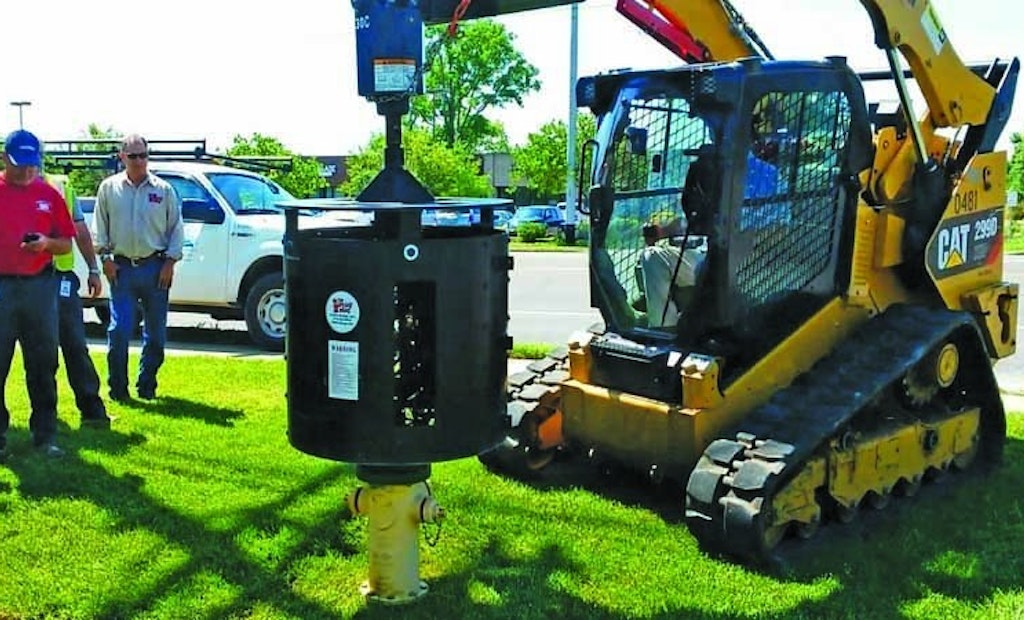Interested in Cleaning?
Get Cleaning articles, news and videos right in your inbox! Sign up now.
Cleaning + Get AlertsThe Plug Hug equipment attachment automates the process of fire hydrant cleaning. Used with a skid-steer, backhoe, mini-loader or excavator, it makes a hydrant paint-ready and can clear snow-covered or plowed-under hydrants in about two minutes, saving municipalities time and money compared to manual cleaning, sandblasting or shoveling.
“The Plug Hug was designed and developed to provide municipalities with a new tool to clean and prepare fire hydrants for painting,” says Doug Marshall, chief operations officer. “It takes the rust off all the bolts, removes the paint, debris and weeds that may be around the hydrant.”
The steel attachment, which works on all styles of hydrants, is powered by a standard auger-drive motor (required) and is connected by a 2-inch universal hex or round receiver. Inside The Plug Hug, six plates with 60 steel cables contain over 17,000 needle-like end points that provide the descaling as the attachment is rotated over the hydrant.
“Because it’s an attachment that sits off the front of a skid-steer, backhoe or a front loader, there’s no more physical contact to the hydrant,” Marshall says. “So it eliminates the hand and eye injuries that go with the hand-held instruments because the operator is in the cab of the equipment.”
And it’s environmentally friendly.
“It literally turns the paint to powder and maybe some chips down at the base of the hydrant,” Marshall says. “It’s such a small requisite amount there’s no EPA requirements for cleanup. It’s very expensive for an abrasive blasting contract because of all the regulatory requirements.”
A snow-removal conversion kit is also available. Conversion takes about 15 minutes, enabling the unit to clear a 4-foot-diameter access area around the hydrant in about 60 seconds.
“For those of us who live above the snow line, hydrants get snowed under or plowed under by street plows in the winter and become inaccessible for Public Works folks to maintain them if there’s an issue or for firefighter access if there’s an emergency,” he says.
The attachment can also be used to move snow for creating a pathway to the hydrant, eliminating the need for manually shoveling out the hydrants and potential injury.
“We looked at eliminating team member injuries from a hand, eye and back perspective, and the public safety issue of hydrants buried in snow, while reducing costs and increasing productivity,” he says. 719/313-2791; www.theplughug.com.






